An aeroplane is to go along straight line from A to B, and back again. The relative speed with respect to wind is V. The wind blows perpendicular to line AB with speed v. The distance between A and B is l. The total time for the round trip is:
2l√V2−v2
2vlV2−v2
2VlV2−v2
2l√V2+v2
The correct Answer is:A
To solve the problem, we need to determine the total time taken for the round trip of the airplane from point A to point B and back to point A, considering the effects of wind.
1. Identify the Given Variables:
- Let the distance between points A and B be l.
- The relative speed of the airplane with respect to the wind is V.
- The speed of the wind blowing perpendicular to the line AB is v.
2. Determine the Effective Velocity Components:
- The airplane's effective velocity in the direction of the trip (along line AB) is affected by the wind.
- The velocity of the airplane can be resolved into two components:
- The component along the direction of travel (horizontal): Vcosθ
- The component perpendicular to the direction of travel (vertical): Vsinθ
- Since the wind is blowing perpendicular to the line AB, we can relate the components using the Pythagorean theorem:
V2=(Vcosθ)2+(Vsinθ)2
- The vertical component of the airplane's velocity must balance the wind speed:
Vsinθ=v
- Thus, we can express sinθ:
sinθ=vV
3. Calculate the Horizontal Component:
- Using cos2θ+sin2θ=1:
cos2θ=1−(vV)2
- Therefore, the horizontal component becomes:
Vcosθ=V√1−(vV)2=√V2−v2
4. Calculate the Time for One Leg of the Trip (A to B):
- The time taken to travel from A to B is given by:
TAB=lVcosθ=l√V2−v2
5. Calculate the Time for the Return Trip (B to A):
- The time taken to return from B to A is the same as the time taken from A to B, since the conditions are symmetric:
TBA=TAB=l√V2−v2
6. Calculate the Total Time for the Round Trip:
- The total time for the round trip is:
Ttotal=TAB+TBA=2⋅l√V2−v2=2l√V2−v2
Final Answer:
The total time for the round trip is:
Ttotal=2l√V2−v2
- Let the distance between points A and B be l.
- The relative speed of the airplane with respect to the wind is V.
- The speed of the wind blowing perpendicular to the line AB is v.
- The airplane's effective velocity in the direction of the trip (along line AB) is affected by the wind.
- The velocity of the airplane can be resolved into two components:
- The component along the direction of travel (horizontal): Vcosθ
- The component perpendicular to the direction of travel (vertical): Vsinθ
- Since the wind is blowing perpendicular to the line AB, we can relate the components using the Pythagorean theorem:
V2=(Vcosθ)2+(Vsinθ)2
- The vertical component of the airplane's velocity must balance the wind speed:
Vsinθ=v
- Thus, we can express sinθ:
sinθ=vV
- Using cos2θ+sin2θ=1:
cos2θ=1−(vV)2
- Therefore, the horizontal component becomes:
Vcosθ=V√1−(vV)2=√V2−v2
- The time taken to travel from A to B is given by:
TAB=lVcosθ=l√V2−v2
- The time taken to return from B to A is the same as the time taken from A to B, since the conditions are symmetric:
TBA=TAB=l√V2−v2
- The total time for the round trip is:
Ttotal=TAB+TBA=2⋅l√V2−v2=2l√V2−v2
The total time for the round trip is:
Ttotal=2l√V2−v2
Similar Questions
An aeroplane flies along a straight path AandB and returns back again. The distance between AandB is l and the aeroplane maintains the constant speed v w.r.t. wind.
There is a steady wind with a speed u at an angle θ with line AB. Determine the expression for the total time of the trip.
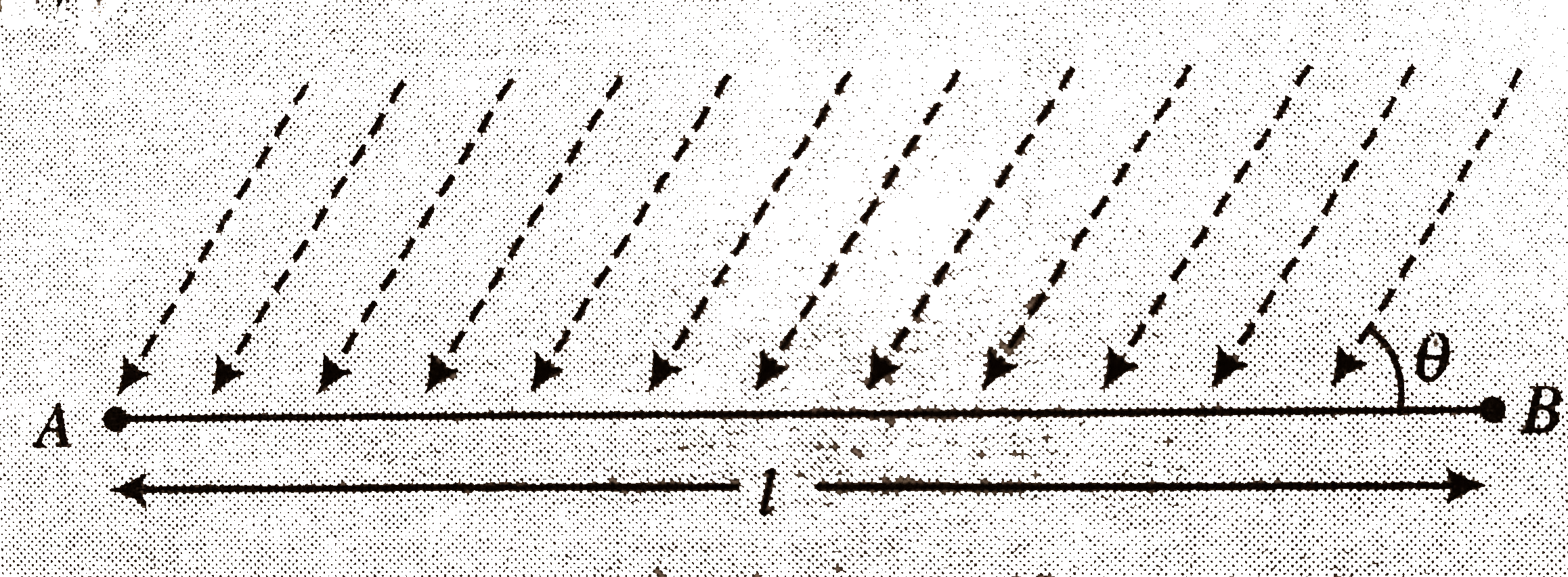 .
.
View SolutionAn airplane flies northward from town A and B and then back again. There is a steady wind blowing towards the north so that for the first state of the trip, the airplane is flying in the same direction as the wind and for the return trip of the journey, the airplane is flying opposite of the wind. The total trip time Tω as compared to the total trip time in the absence of any winds T0 is:
View SolutionA straight wire of length L is bent into a semicircle. It is moved in a uniform magnetic field with speed v with diameter perpendicular to the field. The induced emf between the ends of the wire is
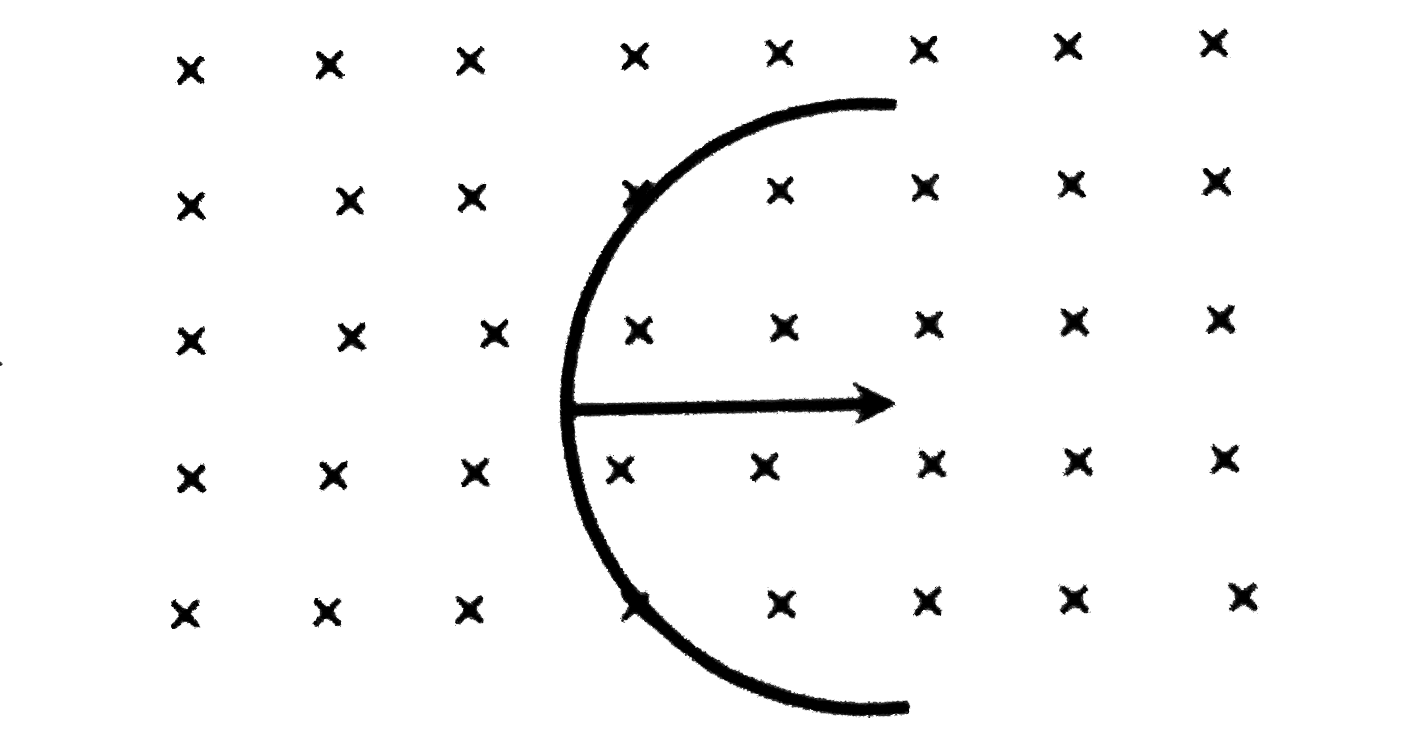
View SolutionA body starting from rest moves along a straight line with a constant acceleration. The variation of speed (v) with distance (s) is represented by the graph:
View SolutionA particle travels along a straight line. It covers halg the distance with a speed (v). The remaining part of the distance was covere with speed v1 for half the time and with speed v2 for the other half the time . Find the average speed of the particle over the entire motion.
View SolutionA man wants to swim in a river from A→B and back from B→A always following line AB (Fig. 5.94). The distance between points AandB is S. The velocity of the river current v is constant over the entire width of the river. The line AB makes an angle ∝ with the direction of current. The man moves with velocity u at angle β to the line AB. The man swim to cover distance AB and back, find the time taken to complete the journey.
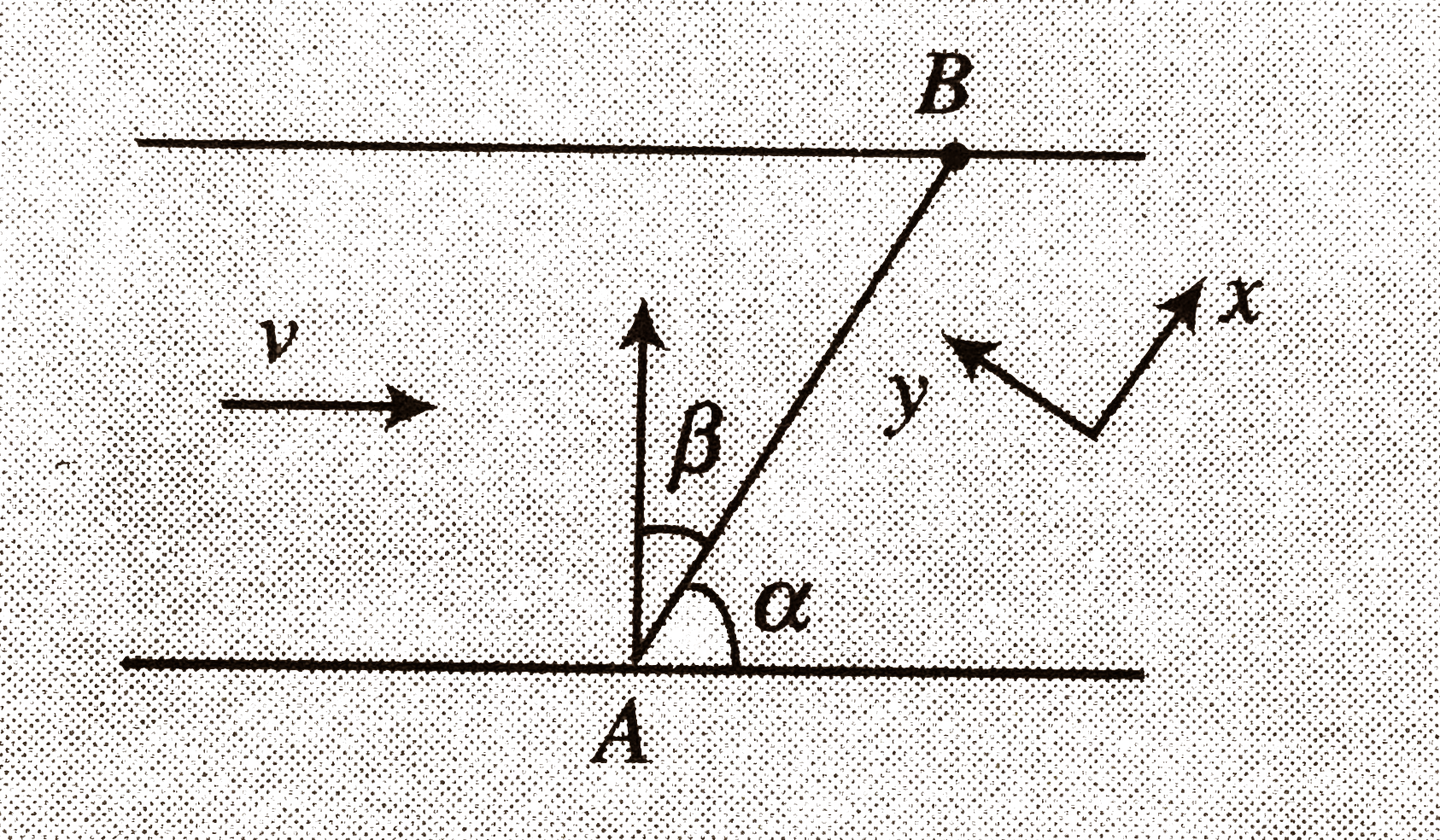 .
.
View SolutionThe distance between two moving particles P and Q at any time is a.If vr be their relative velocity and if u and v be the components of vr, along and perpendicular to PQ.The closest distance between P and Q and time that elapses before they arrive at their nearest distance is
View SolutionA particle of mass m moves in the XY plane with a velocity v along the straight line AB. If the angular momentum of the particle with respect to origin O is LA when it is at A and LB when it is at B, then
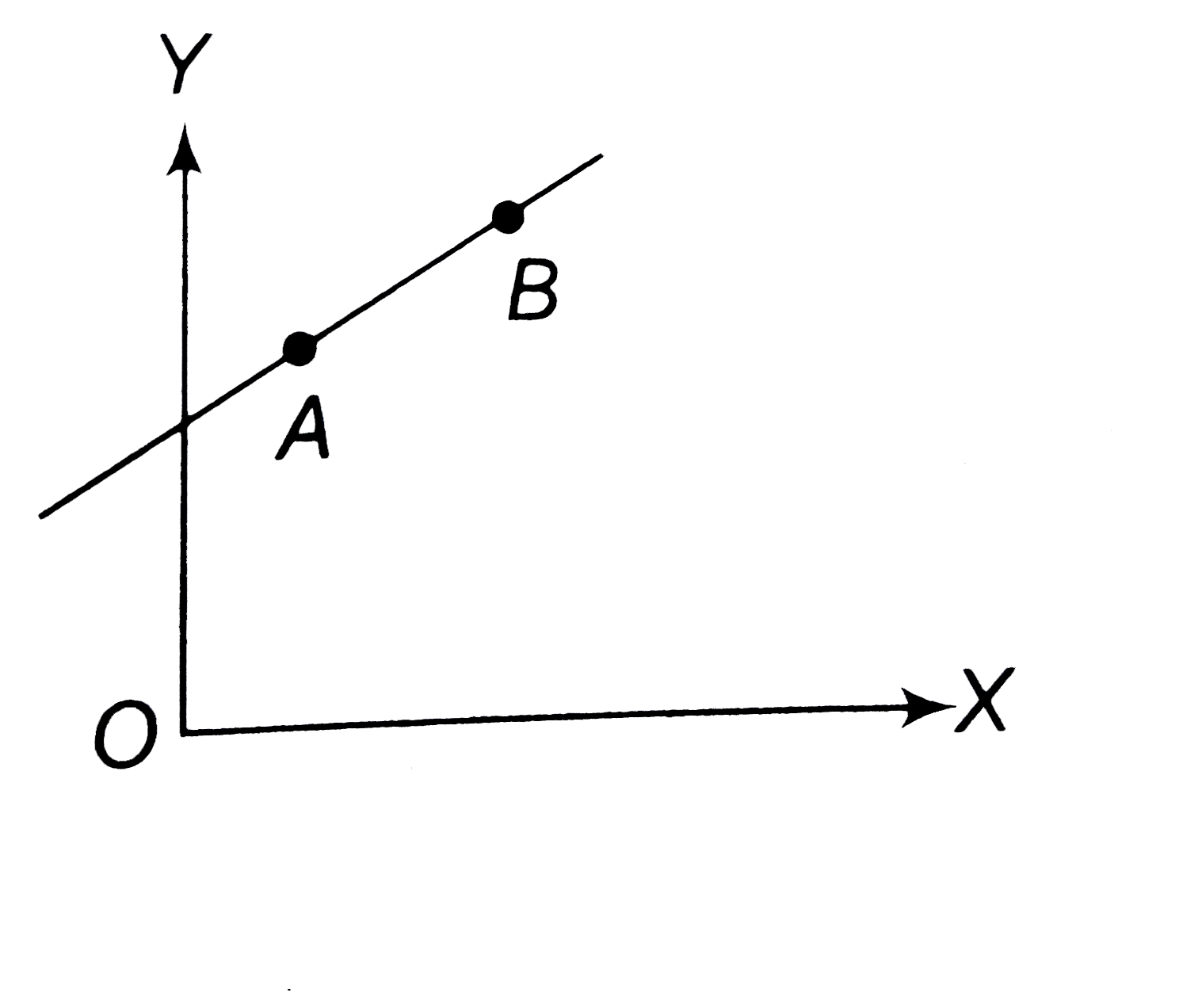
View SolutionA particle moving with uniform acceleration from A to B along a straight line has velcities v1 and v2 at A and B respectively. If C is the mid-point between A and B then determine the velocity of the particle at C .
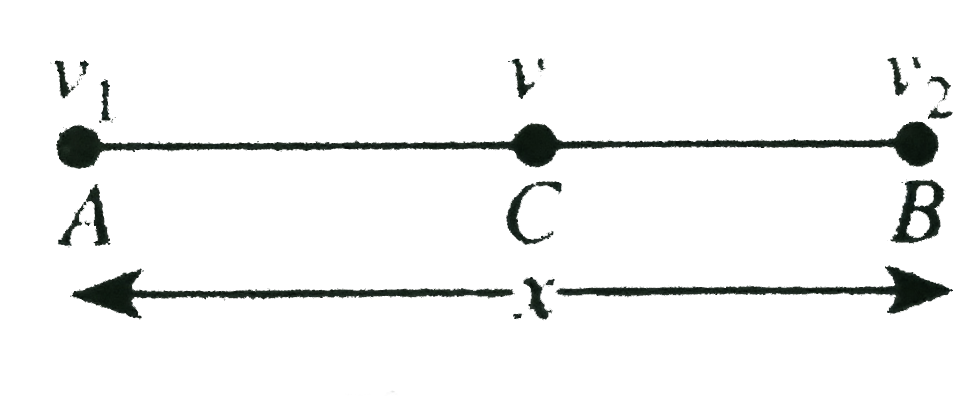 .
.
View SolutionA point moves in a straight line under the retardation av2, where 'a' is a positive constant and v is speed. If the initial speed is u, the distance covered in 't' seconds is :
View Solution
